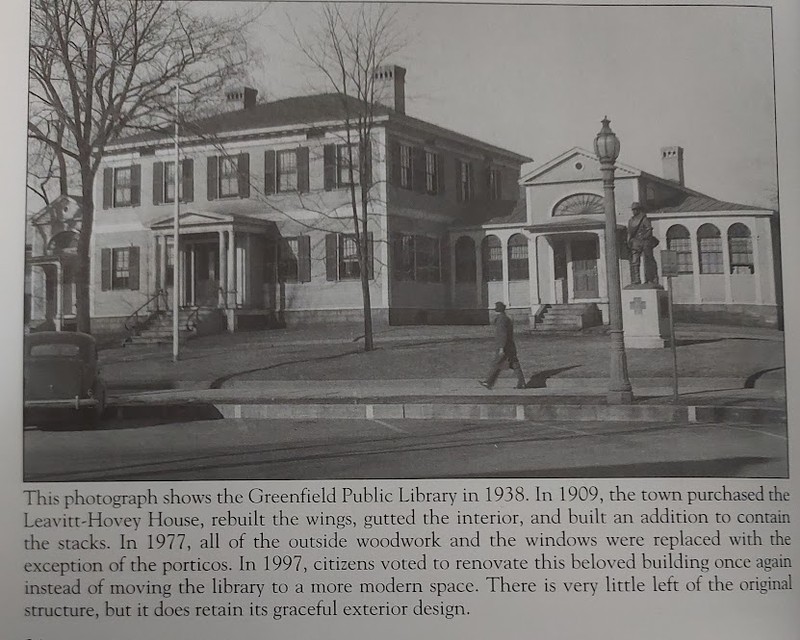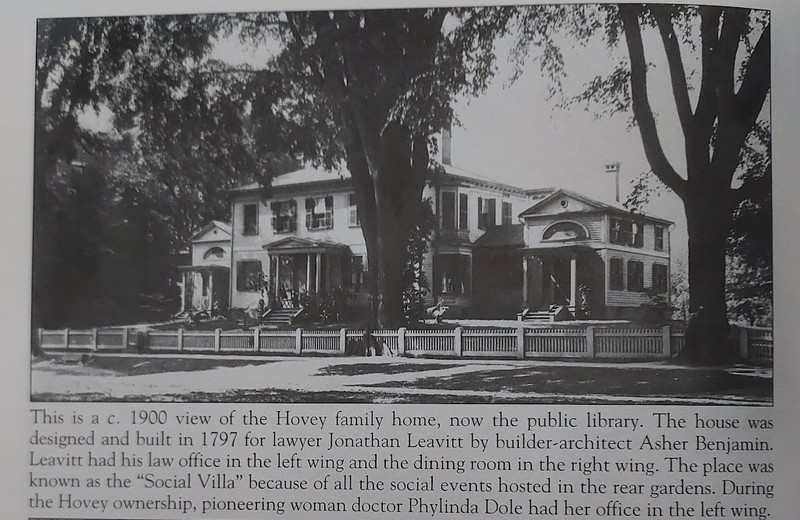Leavitt-Hovey House
Introduction
Text-to-speech Audio
The Leavitt-Hovey house was built in 1797 for Jonathan Leavitt who was one of the first two lawyers in town. Jonathan Leavitt was a 1786 Yale graduate. Leavitt married Emelia Stiles, the daughter of the president of Yale at that time.
The building was designed by Asher Benjamin, a prominent early 19th-century American architect. Leavitt’s law office was housed in the left wing of the building and his dining room and kitchen were in the right wing.
In August 2023, ownership of the building was transferred to the Greenfield Savings Bank.
Images


Backstory and Context
Text-to-speech Audio
During the Leavitt's ownership of the house, it earned the nickname “The Social Villa” because of all of the social gatherings in the gardens at the rear of the house.
One of Leavitt's major actions in Greenfield was in 1809, Leavitt worked with Gilbert, an investor, and Russell, a local merchant, to draft a petition opposing an embargo enacted by the Massachusetts legislature. This petition was supported by George Grennell Jr. who we just touched on.
The house was later owned in the 1800s by Doctor George Hovey and inherited by his wife in 1888 after Hovey passed away. The left wing of the house was used as Hovey’s doctor’s office.
The building was purchased in 1909 by the town of Greenfield. After the purchase, they rebuilt the wings, gutted the interior, and added an addition to properly house the town’s library. On June 9, 1928, the Spanish American War monument was added at the front of the library.
Unfortunately, nothing of the original interior remains in the current building.
Sources
Jenkins, Paul. The Conservative Rebel. The Town of Greenfield, Massachusetts, 1982.
Cutler Kellogg, Lucy. History of Greenfield. Town of Greenfield, 1931.
Miller, Peter S., and William C. Garrison. Images of America Greenfield. Arcadia Publishing, 2000.
Photo of a circa 1940s thread-cutting tool (http://americancenturies.mass.edu/collection/itempage.jsp?itemid=18398)
Theodore Judah | American Experience | PBS. https://www.pbs.org/wgbh/americanexperience/features/tcrr-judah/. Accessed 13 Jan. 2024.
University, © Stanford, et al. “Maps of Theodore Judah.” The First Transcontinental Railroad - Spotlight at Stanford, 3 Apr. 2019, https://exhibits.stanford.edu/rr/feature/maps-of-theodore-judah.
“Science Church Marks 35th Anniversary.” Greenfield Recorder, 23 June 1973.
“Purchase of Former Church Spells Expansion for Franklin County’s YMCA.” Greenfield Recorder, 6 June 2023.
Moorhead, Andrea, et al. The Greenfield Common Court Square Bank Row. Greenfield Historical Commission, 2022.
A Walking Tour of Downtown Historic District -- Greenfield Massachusetts. greenfieldsfuture.org.
